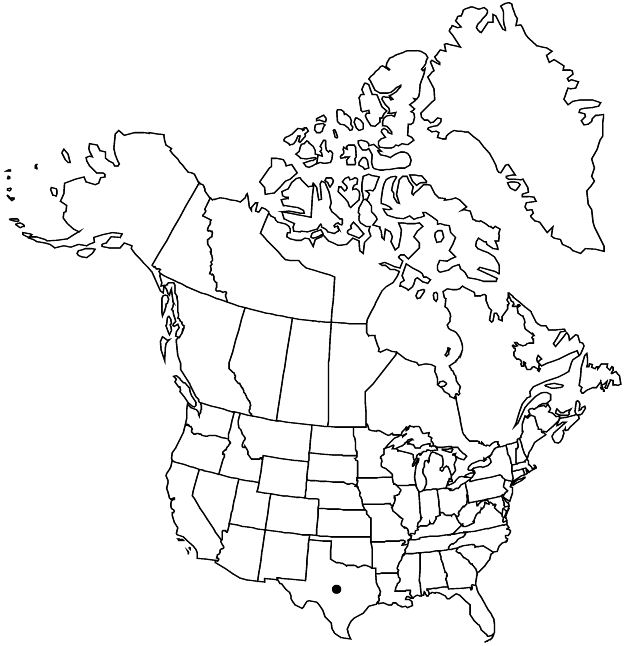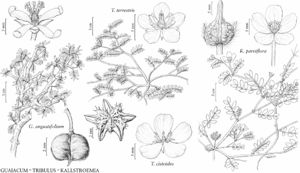Difference between revisions of "Guaiacum angustifolium"
in F. A. Wislizenus, Mem. Tour N. Mexico, 113. 1848.
FNA>Volume Importer |
imported>Volume Importer |
||
| (One intermediate revision by the same user not shown) | |||
| Line 1: | Line 1: | ||
{{Treatment/ID | {{Treatment/ID | ||
|accepted_name=Guaiacum angustifolium | |accepted_name=Guaiacum angustifolium | ||
| − | |accepted_authority=Engelmann | + | |accepted_authority=Engelmann |
|publications={{Treatment/Publication | |publications={{Treatment/Publication | ||
| − | |title=Mem. Tour N. Mexico, | + | |title=in F. A. Wislizenus, Mem. Tour N. Mexico, |
|place=113. 1848 | |place=113. 1848 | ||
|year=1848 | |year=1848 | ||
| Line 41: | Line 41: | ||
-->{{#Taxon: | -->{{#Taxon: | ||
name=Guaiacum angustifolium | name=Guaiacum angustifolium | ||
| − | |authority=Engelmann | + | |authority=Engelmann |
|rank=species | |rank=species | ||
|parent rank=genus | |parent rank=genus | ||
| Line 52: | Line 52: | ||
|distribution=Tex.;Mexico (Chihuahua;Coahuila;Nuevo León;San Luis Potosí;Tamaulipas). | |distribution=Tex.;Mexico (Chihuahua;Coahuila;Nuevo León;San Luis Potosí;Tamaulipas). | ||
|reference=None | |reference=None | ||
| − | |publication title=Mem. Tour N. Mexico, | + | |publication title=in F. A. Wislizenus, Mem. Tour N. Mexico, |
|publication year=1848 | |publication year=1848 | ||
|special status=Illustrated | |special status=Illustrated | ||
| − | |source xml=https:// | + | |source xml=https://bitbucket.org/aafc-mbb/fna-data-curation/src/2e0870ddd59836b60bcf96646a41e87ea5a5943a/coarse_grained_fna_xml/V12/V12_988.xml |
|genus=Guaiacum | |genus=Guaiacum | ||
|species=Guaiacum angustifolium | |species=Guaiacum angustifolium | ||
Latest revision as of 19:19, 5 November 2020
Shrubs or trees, to 3(–7) m; trunk well defined, to 0.3 m diam.; bark fissured vertically; branches many, spreading or straggling, knotty; crown diffuse. Leaves opposite or fascicled, 1–3 cm, folded at night and often also in heat of day; stipules persistent, subulate, 1 mm, apex acute, somewhat spinescent, glabrous; petiole absent or nearly so; leaflets 8–16, dark green, linear-oblong to linear-spatulate, 5–15 × 2–3 mm, apex obtuse, coriaceous, surfaces reticulate. Pedicels hairy. Flowers axillary, mostly solitary, sometimes clustered, 1.2–2 cm diam.; sepals (4–)5, obovate, to 5 mm, outer smaller; petals (4–)5, usually blue to purple, rarely white, obovate to elliptic, 6–10 × 2–3 mm, base short-clawed, apex often notched; stamens (8–)10, shorter than petals; filaments each with small crenate scale at base; ovary obcordiform, flattened, 2(–4)-lobed, 2(–4)-locular, hairy; style subulate. Capsules becoming orange, obcordiform, flattened, 10–20 mm diam., 2(–4)-lobed, 2(–4)-locular, ± 2(–4)-winged, apex abruptly attenuate-apiculate, reticulate, hairy. Seeds yellowish brown, ovoid to reniform, 10–11 mm.
Phenology: Flowering Mar–Sep.
Habitat: Shrubby vegetation, limestone soils.
Elevation: 0–1200 m.
Distribution

Tex., Mexico (Chihuahua, Coahuila, Nuevo León, San Luis Potosí, Tamaulipas).
Discussion
Guaiacum angustifolium occurs in southern, central, and western Texas. The root bark is used as a source of soap, and root extracts are used in folk medicine to treat various diseases. The stems are used for fence posts, tool handles, and firewood.
Selected References
None.
